STEM Catalysts
Meet women from our community who are changing the face of STEM.
Become inspired by their example and share your own story with us.
Email your interest to ub-wisc@buffalo.edu.
Please click on the name by each picture to see their stories.
Sharmistha Bagchi-Sen, Professor, Geography

How are you changing the face of STEM? Research on women in STEM, connecting STEM with other disciplines, etc.
What inspired you to work or study in a STEM field or advocate on behalf of women in STEM? Spatial thinking.
What excites you about your work? Complexity of problems/time-space evolution of phenomenon.
How can we engage more women, girls, and other underrepresented groups in STEM? Advocate against gendered advertising and train school teachers to avoid gendered stereotypes.
What advice can you give to someone who is interested in STEM as a career choice? Work hard, get tutoring to get over initial difficult courses, and look at role models from other parts of the world.
What hobbies do you enjoy outside of work? Travel.
Ann Bisantz, Professor, Industrial and Systems Engineering
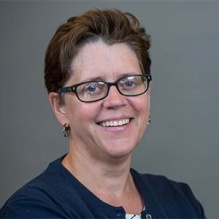
How are you changing the face of STEM? By actively recruiting and mentoring diverse faculty and students in engineering.
What inspired you to work or study in a STEM field or advocate on behalf of women in STEM? I think it is critical that everyone — but particularly, senior faculty and campus leadership — are actively committed to talking about and acting in the service of diversity. It can be very hard for younger faculty, or students, to have a voice or impact on policies that affect women or other underrepresented groups. It is our responsibility to make sure this is happening to provide a supportive campus environment.
What excites you about your work? Technology is rapidly changing the way people live and work. Rather than designing technology for technology’s sake, we need to make sure these new, complex systems really support the kinds of work and activities people want to do — enhancing safety, productivity and even enjoyment. Doing this requires a deep understand of the kinds of work and activities people engage in — everything from providing emergency medical care, to controlling complex military systems, to monitoring driverless cars. Understanding all these various work environments and aligning user needs with technological capabilities is always challenging and exciting.
How can we engage more women, girls, and other underrepresented groups in STEM? I’d like to see better K-12 STEM education for everyone, and an expectation that literacy includes mathematics and scientific knowledge, in addition to language arts.
What advice can you give to someone who is interested in STEM as a career choice? Don’t be discouraged by all the negative press which tends to highlight the everyday pressures of work-family balance, or even some of the truly horrible experiences women in STEM have been through. There are many success stories, and many people in your corner — I don’t think young women should feel that they are going to be alone or unsuccessful. Bad things do happen, but these aren’t the only stories.
What hobbies do you enjoy outside of work? Running (not very fast!), cooking, reading, and our new favorite family activity, Hygge time!
Leisl Folks, Provost, University of Arizona, Tuscon
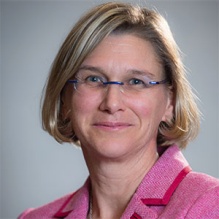
How are you changing the face of STEM? By speaking up about implicit and explicit bias, and actively mentoring women and minorities.
What inspired you to work or study in a STEM field or advocate on behalf of women in STEM? I just love messing about in the lab with cool equipment and collecting new data.
What excites you about work or school? I like having new challenges all the time — no two weeks have the same content.
How can we engage more women, girls, and other underrepresented groups in STEM? By countering the stereotypes about scientists, showing that great science is done by people of all stripes and backgrounds.
What advice can you give to someone who is interested in STEM as a career choice? Do your homework! Always! Being persistent and reliable is such an asset if you want to pursue a career in STEM.
What hobbies do you enjoy outside of work or school? I love the outdoors — skiing, mountaineering, hiking, biking — that kind of stuff. But I spend a lot of time just messing about with my kids too.
Kim Grant, Business Development Executive, New York Center of Excellence, Bioinformatics, & Life Sciences
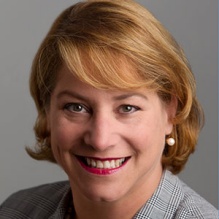
How are you changing the face of STEM? Part of my role in business development is speaking to a broad audience that have a variety of education and technical expertise. In these conversations I deliberately try to demystify scientific and engineering concepts to translate these concepts and make them comprehensive.
What inspired you? When I was in high school, I had good grades in math and science. When I discussed career options with my guidance counselor, he said, “you could be a nurse or a teacher.” No one ever offered that I should explore engineering. I am committed to making sure this same scenario doesn’t happen to other smart young ladies.
What excites you? I consider myself a lifelong learner. At the Center of Excellence in Bioinformatics and Life Sciences (CBLS), I work with companies, faculty and students doing research and innovation with medical devices, diagnostics, therapeutics, healthcare IT and informatics. The CBLS is at the epicenter of Buffalo’s growing biotech community and I’m seeing new technologies being developed on a daily basis that will improve people’s quality of life while generating new job opportunities in our community.
How can we engage more women? We need to talk to them when they are young, in middle school. Provide them with examples and repeat that message on a regular repeating basis so they don’t get derailed by easier career paths. We need to explain that failures happen and provide a great launch pad for what comes next. Failure leads to learning how to think critically about how things work and how to improve upon them.
What advice can you give to someone interested in STEM? Seek out the people and the programs that will expose you to new experiences and provide experiential learning opportunities to assess what you like and what you don’t. There are STEM initiatives and do-it yourself forums on the internet, internships, summer camps, science museum and scouting that have programs available, but you have to seek them out. Tell your parents, teachers and school counselors that you’re interested in pursuing STEM and learn more about how you can be involved.
What hobbies do you enjoy outside work? In the winter, I’m an Alpine ski patroller and in the summer I row crew. I love to do experimental cooking and use my husband and son as Guinee pigs for my new creations. I’m an avid business book junkie, I love going to the movies and to the theater and walking my two rescue dogs.
Tracy K.P. Gregg, Associate Professor, Geology
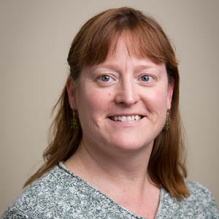
How are you changing the face of STEM? I was the first female faculty member ever hired in the Geology Department at UB. Over the years, I’ve tried to mentor as many female graduate students and undergraduates as possible.
What inspired you to work or study in a STEM field or advocate on behalf of women in STEM? I always liked science. It wasn’t until I got to graduate school that I realized that women were under-represented in my field; since then, I’ve tried to be an advocate. In particular, I like reaching out to elementary and middle schools so that girls can see that women are scientists, too.
What excites you about your work? I like the interconnectedness of the earth sciences. To understand how the Earth works, I have to understand a bit about chemistry, biology, and physics.
How can we engage more women, girls, and other underrepresented groups in STEM? Provide positive role models.
What advice can you give to someone who is interested in STEM as a career choice? Find a mentor!
What hobbies do you enjoy outside of work? Ask me again when both of my kids are in college (grin).
Arlene Kaukus, Director, Career Services
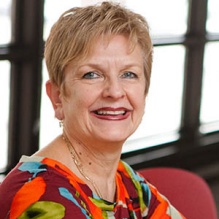
How are you changing the face of STEM? Offering through our office a specific STEM Career Fair and working with women’s groups on campus to encourage women to attend.
What inspired you to work or study in a STEM field or advocate on behalf of women in STEM? I am an advocate for women having equal opportunities in all areas. I believe that women contribute unique talents to all industries/sectors and should be represented in all fields.
What excites you about your work? I am excited to see more women students actively pursuing these career paths that they might have overlooked in the past.
How can we engage more women, girls, and other underrepresented groups in STEM? Continue to highlight examples of the women excelling in the field (success stories inspire), work collaboratively with STEM employers and companies to recruit women into their companies.
What advice can you give to someone who is interested in STEM as a career choice? Do not be discouraged in pursuing your dreams even if you find yourself in the minority. Believe that your contribution to the field is important and valued. Encourage and mentor other women around you.
What hobbies do you enjoy outside of work? Gardening, reading, spinning and cooking.
Janet Morrow, UB Distinguished Professor, Chemistry
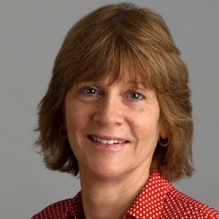
How are you changing the face of STEM? I do my best to mentor students and to set an example. I enjoy my work, but I also try to balance work with other aspects of my life. I mentor graduate students and undergraduate students in the chemistry department. My closest interactions are with my research students, but I also mentor students in classes and on graduate student committees.
It is gratifying to see increasing numbers of female faculty, yet some STEM fields are still lagging. I have worked in different areas of chemistry and each has different percentages of women. In the field of biomedical imaging, which is currently a focus in my group, there are so few women that I am sometimes the only female faculty member giving a talk. In part because of this, female students seek me out after the talk and at subsequent meetings.
What inspired you to work or study in a STEM field or advocate on behalf of women in STEM? Chemistry has always been my favorite science. I started doing research as a sophomore in marine biochemistry and then moved on to inorganic chemistry. I enjoyed it so much, that I decided to go to graduate school. I combined my early research interests and am now working in the area of bioinorganic chemistry.
What excites you about your work? I love to see new data from my research group and to brainstorm about the next experiments. I also like to travel to conferences in my field or just outside of my field. I enjoy the stimulation of interdisciplinary research.
How can we engage more women, girls, and other underrepresented groups in STEM? We should introduce women to undergraduate research in the university early on in their studies to give them practical experiences in problem solving and working in a research environment. This is especially important in science which lacks sufficient time in the laboratory to develop skills. Having better hands-on opportunities in middle school and high school would be beneficial too.
What advice can you give to someone who is interested in STEM as a career choice? Choose a STEM field that you enjoy and be persistent about your goals. Seek out mentors and also peers who can help you along your way.
What hobbies do you enjoy outside of work? Hiking, skiing, canoeing, bicycling, reading and traveling.
Sarah Muldoon, Assistant Professor, Mathematics, Computational and Data-Enabled Science and Engineering Program, Neuroscience Program, Adjunct Assistant Professor, Oncology at Roswell Park Cancer Institute
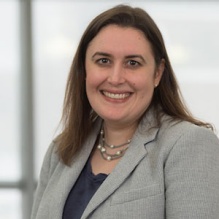
How are you changing the face of STEM? I think that seeing other women involved in STEM research is incredibly important for young women pursing STEM careers. I strive to be a strong role model and mentor for the next generation of female (and male!) STEM researchers.
What inspired you to work or study in a STEM field or advocate on behalf of women in STEM? I’ve always just worked on topics that interested me without really thinking about the fact that they were in a STEM field. However, I am also lucky because I have had some amazing female mentors throughout my STEM career that have really motivated me through their examples as strong women involved in STEM research.
What excites you about your work? The brain is such an interesting and complex system and there are still so many things that we don’t know about how it functions. It’s great to work in a field with so many open questions. Plus, I love interdisciplinary research because with each collaboration I get to learn new things from my colleagues and think about solving problems in a new way.
How can we engage more women, girls, and other underrepresented groups in STEM? I really believe in working with middle school aged children to encourage an ongoing interest in STEM. This is an age where many kids, and particularly girls, lose an interest in STEM, so it’s important to specifically reach out to this age group.
What advice can you give to someone who is interested in STEM as a career choice? Just keep doing what you love and never give up.
What hobbies do you enjoy outside of work? I really enjoy baking and decorating cakes. I also love to travel and see new places and cultures.
Lora Park, Associate Professor, Psychology
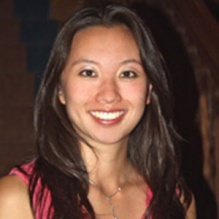
How are you changing the face of STEM? By conducting research using social psychological theory and methods to understand factors that shape women’s attitudes, identification with, and interest in STEM fields.
What inspired you to work or study in a STEM field or advocate on behalf of women in STEM? As an undergraduate student, my honors thesis examined college students’ implicit gender stereotypes and attitudes toward math, science and engineering. In graduate school, I studied how aspects of the person and the social environment affect outcomes such as motivation and performance. These experiences solidified my interest in studying factors that affect women in STEM fields. I strongly believe everyone has the potential to succeed, and want to make sure that members of underrepresented groups have that chance by understanding the barriers they may face and how to push through them.
What excites you about your work? The opportunity to work with others to study novel ways to reduce disparities and improve students’ confidence and performance in STEM fields.
How can we engage more women, girls and other underrepresented groups in STEM? Through education, we can empower women and girls (and people in general) to become their best selves. Education comes in many forms, including learning about pathways to achieving success through role models, interactions with members of diverse groups, and support and encouragement. Another key is to de-emphasize the importance of externally contingent qualities such as appearance, popularity or financial success, so that you are pursuing goals that are personally meaningful to you and not just because society says they are important.
What advice can you give to someone who is interested in STEM as a career choice? Stay connected to what excites you about STEM. What about STEM makes you curious, interested, and feel “alive?” Even when things get tough (and I assure you they will at times!), remember to stay connected to these feelings.Find people who can provide a supportive network throughout your career and your life in general. This includes, colleagues, friends and close others — you want people who will be understanding and supportive of your career choices.
What hobbies do you enjoy outside of work? Spending time with my husband and two young sons, hanging out with friends, singing in the Buffalo Philharmonic Chorus, exploring new places and activities.
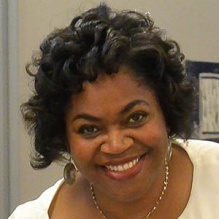
How are you changing the face of STEM? Recruiting middle school and high school students of underrepresented populations to pursue STEM majors in postsecondary education.
What inspired you to work or study in a STEM field or advocate on behalf of women in STEM? When in high school, I was a STEP student and had the opportunity to be exposed to the career field of dentistry. This exposure helped me to decide to be a dental hygienist. I attended ECC North for dental hygiene then graduated as a Registered Dental Hygienist. I worked in the field for approximately 8 years. While working I obtained my Bachelors of Science degree then my Masters of Social Work from UB. I was excited when the position for STEP became available because it was my dream job to work with students in the community. I have always loved math and science and wanted the opportunity to encourage students to love math and science and to pursue STEM careers. There is still work to be done in terms of increasing the number of underrepresented populations in the STEM and healthcare professions. I am committed to recruiting, informing and exposing the young students, to those careers.
What excites you about your work? When I see the light in students eyes when they learn something new, or a student develops the confidence to challenge themselves or when I student tells me they want to try something new. Also those students who commit their summers to learning and prepping for the upcoming school year or those who choose to participate in a summer program that exposes them to computer programming or engineering. Those students excite me and catapult me into seeking more opportunities and projects.
How can we engage more women, girls, and other underrepresented groups in STEM? Provide opportunities that challenge them such as competitions, research projects, exploration opportunities and mentoring opportunities.
What advice can you give to someone who is interested in STEM as a career choice? The advice I would give a person who is interested in STEM as a career choice would be 1. Seek outlets to explore science and math outside of school. 2. Read, read, read — increase comprehension skills. Reading is the foundation to understanding science and everything else. 3. Exposure to the various careers in STEM is primary. Learn about the numerous science-related careers available. This can be done through internships, plant tours, hospital tours etc.
What hobbies do you enjoy outside of work? I spend my free time reading, visiting museums, family time and studying African American history.
Lisa Stephens, Assistant Dean of Digital Education, School of Engineering and Applied Sciences
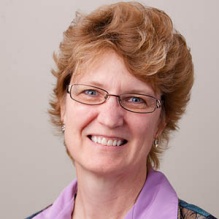
How are you changing the face of STEM? By supporting new styles of education delivery, primarily through policy and technology adoption.
What inspired you to work or study in a STEM field or advocate on behalf of women in STEM? I worked in commercial television with multiple technologies and longed to see the technology serve a higher purpose, so I adapted and broadened my skill sets with the goal of using technology in service of pedagogy.
What excites you about your work? Hands down, working with creative people committed to creative solutions to help advance humanity.
How can we engage more women, girls, and other underrepresented groups in STEM? By providing critical thinking and verbal strategies as early as middle school to offset cultural bias, or perception of cultural bias, when leading projects, inventing stuff, articulating new ideas and solutions, etc.
What advice can you give to someone who is interested in STEM as a career choice? To understand that passion is wonderful, and serves as the driver to survive the inevitable bumps that life finds — but that hard work and persistence ... the willingness to hang in and work a problem even when it’s not fun, is a skill worth developing!
What hobbies do you enjoy outside of work? Sailing, throwing pottery (when the clay is wet) and bicycling.
Letitia Thomas, Assistant Dean of Diversity, School of Engineering and Applied Sciences
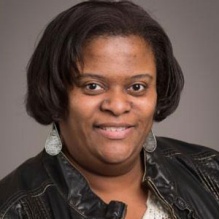
How are you changing the face of STEM? UB STEM programs provide students with a community of STEM scholars who share similar academic and career goals. The program provides students with a breadth of experiences and training to successfully complete their degrees and continue on to graduate studies. UB STEM stands as one of the only, possibly the only, community of STEM students of color. Unlike other programs, UB STEM focuses specifically on STEM students and the unique needs and struggles they face.
What inspired you to work or study in a STEM field or advocate on behalf of women in STEM? We do this work because we recognized a need among our students. They come in to our offices and tell us about the struggles they face in class, the loneliness, the isolation. We have to do this work so they can keep going, graduate and give back to another student or professional.
What excites you about work or school? I am always excited to create new programs, meet new students, and nurture hidden talent. Many people think that women, especially women of color, can’t “do” STEM. We know they can if they see others like themselves and receive academic and social support.
How can we engage more women, girls, and other underrepresented groups in STEM? We can empower students through academic support in gatekeeper courses (math, chemistry, physics, biology); providing research and industrial internships; help intended STEM students better navigate UB; make sure that students have the resources to pay tuition and buy books, and ensure that the faculty provide a more nurturing and less competitive environment in which to learn. Instead of look to the left, look to the right, one of you won’t be here next year, we need to change the culture of STEM to say, look to the left, look to the right, those are people you should study with!
What advice can you give to someone who is interested in STEM as a career choice? You must conquer math! Don’t be afraid of it, just practice, practice, practice. Also, don’t underestimate how much time and effort it will take to major in STEM.
What hobbies do you enjoy outside of work or school? I enjoy reading, traveling, television, NPR and being a mom.
Susan Udin, Professor, Physiology and Biophysics
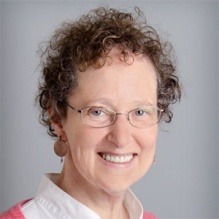
How are you changing the face of STEM? I have been working on behalf of women in these fields since I was a graduate student, as an advisor and organizer.
What inspired you to work or study in a STEM field or advocate on behalf of women in STEM? My experiences growing up in the ’50s and ’60s, when the place of women in science was very openly questioned, forced me to advocate for myself. I wanted to help other girls and women pursue their careers, and I wanted to change the institutions within which we worked.
What excites you about your work? I love discovering new things! I can’t wait to find out whether my hypothesis about why function is poor after nerve regeneration to muscles is correct.
How can we engage more women, girls, and other underrepresented groups in STEM? Start early. Provide lots of ways for girls and women to interact with one another and support one another at every step of the way.
What advice can you give to someone who is interested in STEM as a career choice? Find good mentors and colleagues. If you marry or have a long-term partner, work out equitable arrangements that allow you both to fulfill your work and life goals.
What hobbies do you enjoy outside of work? I like to garden, listen to music, watch movies, read, and travel. I’m also very involved in my neighborhood as a member of the board of directors of the Parkside Community Association, where my main focus is services for the elderly and people living with disabilities.
Gail Willsky, Associate Professor, Emerita, Biochemistry
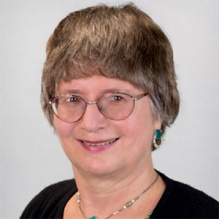
How are you changing the face of STEM? By promoting information on STEM, mentoring through the Association for Women in Science, co-developing a hands-on program to introduce STEM fields to middle school students in Buffalo “Imagine yourself a Scientist,” being a role model for women science students as I travel to different countries discussing my research and also judging for the WNY Regional Science & Engineering Fair to encourage younger students to pursue STEM fields.
What inspired you to work or study in a STEM field or advocate on behalf of women in STEM? In my earliest memories I always wanted to know how things worked, so a career in science was a natural. It wasn’t clear that the career would be as a university faculty member until I was a post-doc, but I always knew that I would have a career in science. Teaching others has always been very rewarding, which made an academic career very inviting for me.
What excites you about your work? The thrill of discovering something that no one else knows about how living systems operate from microorganisms to humans. It is important to me to be doing basic research in areas involving medical topics. It still amazes me that people pay me to do what I can’t imagine not doing.
How can we engage more women, girls, and other underrepresented groups in STEM? Hands-on experience and mentoring in middle school is critical to promote participation in STEM fields. This time period is important before young girls become disenchanted with STEM. In addition, it is necessary to have members of underrepresented groups show young students that they have succeeded in STEM, providing the students with role models similar to themselves.
What advice can you give to someone who is interested in STEM as a career choice? Seek out mentors to find out more about the STEM careers that appeal to you. A strong support system is essential to weather the tough times and take advantage of the good times. Don’t allow yourself to become marginalized. The Association for Women in Science can help you to find out about how other people such as yourself are working in STEM fields at all levels. The AWIS magazine is written by women for women and explores all aspects of the STEM lifestyle.
What hobbies do you enjoy outside of work? Gardening, sailing, swimming, hiking, cooking, going to plays, concerts, movies and traveling. Being in a STEM field gives you the opportunity to travel all over the world and to be shown around by your colleagues who live there. It is also rewarding to return the favor and be a tour guide for visiting colleagues.













